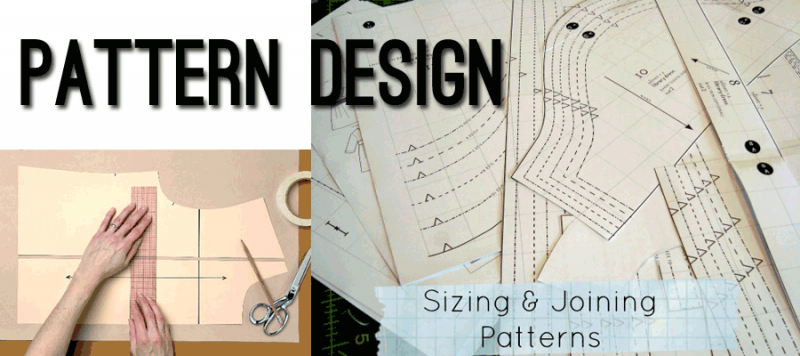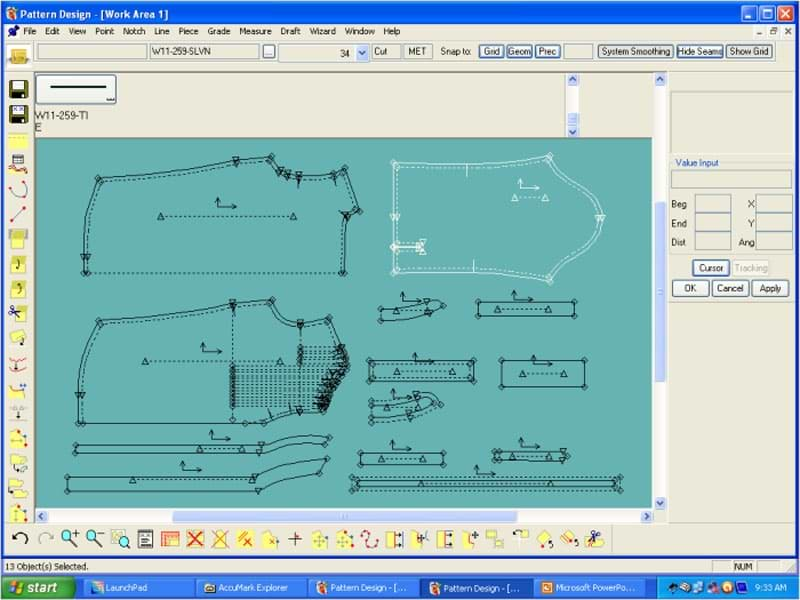Pattern design is a process that goes through several refinements. I have yet to see a pattern maker that makes a pattern utterly correct on the first go in my 20 years of career. As a creative designer, you can illustrate what you want to see in a style. However, converting that style idea into a garment goes through several processes. To help transform your idea into a salable product, you need a tech pack designer and pattern master. An Important process is pattern making. Pattern design demands expertise in measurements, geometry, and several fitting refinements.
Most fashion schools offering pattern-making courses start with basic flat pattern drafting. They begin with basic pattern shapes or blocks to give a shape of different styles. Also, they teach darts, pleats, gathers, trucks, facing, ruffles, and other design details. Those basic teachings further help to create different types of garment patterns. Yet, it takes years to master pattern-making as this is a continuous refinement process. That is why finding a good tech pack designer and an apparel pattern maker is difficult.
Draping vs Flat Pattern Making
Another way of pattern-making process is draping. Boutiques and designer garment workshops often use this process. This method requires a dress form or mannequin to prepare the base by pinning the fabric onto the dress form. Then, it gets translated into a paper pattern. Draping is the most convenient way to learn and prepare patterns. You need to pin the fabric to the dress form, trim excess fabric, and stitch the garment. This process is best suited if you are designing a custom garment. But, when making a pattern for mass production, the process does not work. It would help if you had flat patterns or paper patterns for this. If you want to produce a design repeatedly, you need a paper pattern. Most clothing manufacturers use flat paper patterns. A flat pattern helps optimize fabric consumption and makes it convenient to cut fabric in layers.
Draping and flat pattern making are two different processes of pattern making. Following any one of the processes depends on the needs of the business. Draping is the right choice for custom apparel specific to a person or designer garment. But, when it comes to mass production, flat pattern making is the best way to follow. You don’t need to follow the same process. Every garment style throws a different question, and there is a new experience every time. So, the pattern-making process requires practice and patience.
Co-ordination with Apparel Tech Pack Designer
Designing a collection for your clothing brand is a team effort. Only a designer or a pattern maker cannot execute the whole process alone. A pattern maker needs the technical drawing of the garment style to make the pattern. The tech pack contains every detail, such as the garment’s shape. These details need a clear explanation to understand the style and functionality. A detailed tech pack is a must before you consider making the pattern. Also, the measurement specification sheet plays an important role. It would help if you had detailed and accurate measurements of each part of the garment to make a pattern. The garment’s fit is essential; without a proper measurement spec sheet, it is impossible. For minor adjustments and alterations, proper allowance measures are also needed.
Pattern Design – A Continuous Process of Evolution
Pattern-making is an age-old occupation and full of unwritten rules. This is why you get to have several refinements when making a pattern. A pattern maker must first visualize the style and its detailing. So, the pattern maker and the technical designer must be on the same page. You need a technical designer and a pattern maker to convert a style idea into a wearable garment. Preparing an apparel pattern that gives a perfect garment fit in one go is quite rare. So, garment fit pattern design and sampling go through several refinements.
Pattern Making and Size Grading
Once you have a pattern that best fits, you must note and record the measurements per the guidelines. The next phase is to prepare size grading. Based on the base pattern, you should grade for different sizes based on the proportion. When you send the tech pack to the factory till that point, the style and detailing are in the planning stage. The first step of execution starts with pattern making. We make a base pattern, and the factory prepares a mock sample to ensure correct fits. If there is any gap, the technical designer checks it to fix and approve the pattern.
Apparel Tech Pack Design & Pattern Design Services
If you don’t have a pattern, we will help you make one. We must make a pattern of your garment before we can make your first sample. Additionally, we must alter the pattern every time you adjust or change your garment. We prepare custom patterns to fit different consumers with different garment fits. Please send us your query through our contact form to ask for a quote for pattern designs.
We also offer ready-to-use tech pack templates through our Tech Pack Template Store. If you are looking for fashion styles for commonly used garments, wait no longer for any technical designer. You can visit our Tech Pack Template Store and make your purchase directly from there. You will get a wide range of style tech packs with a Pre-tested Measurement specification sheet.

